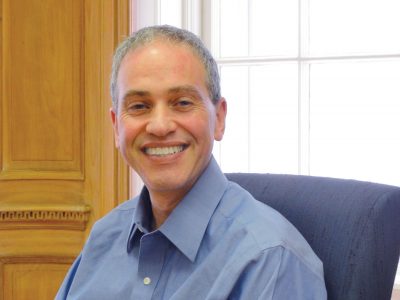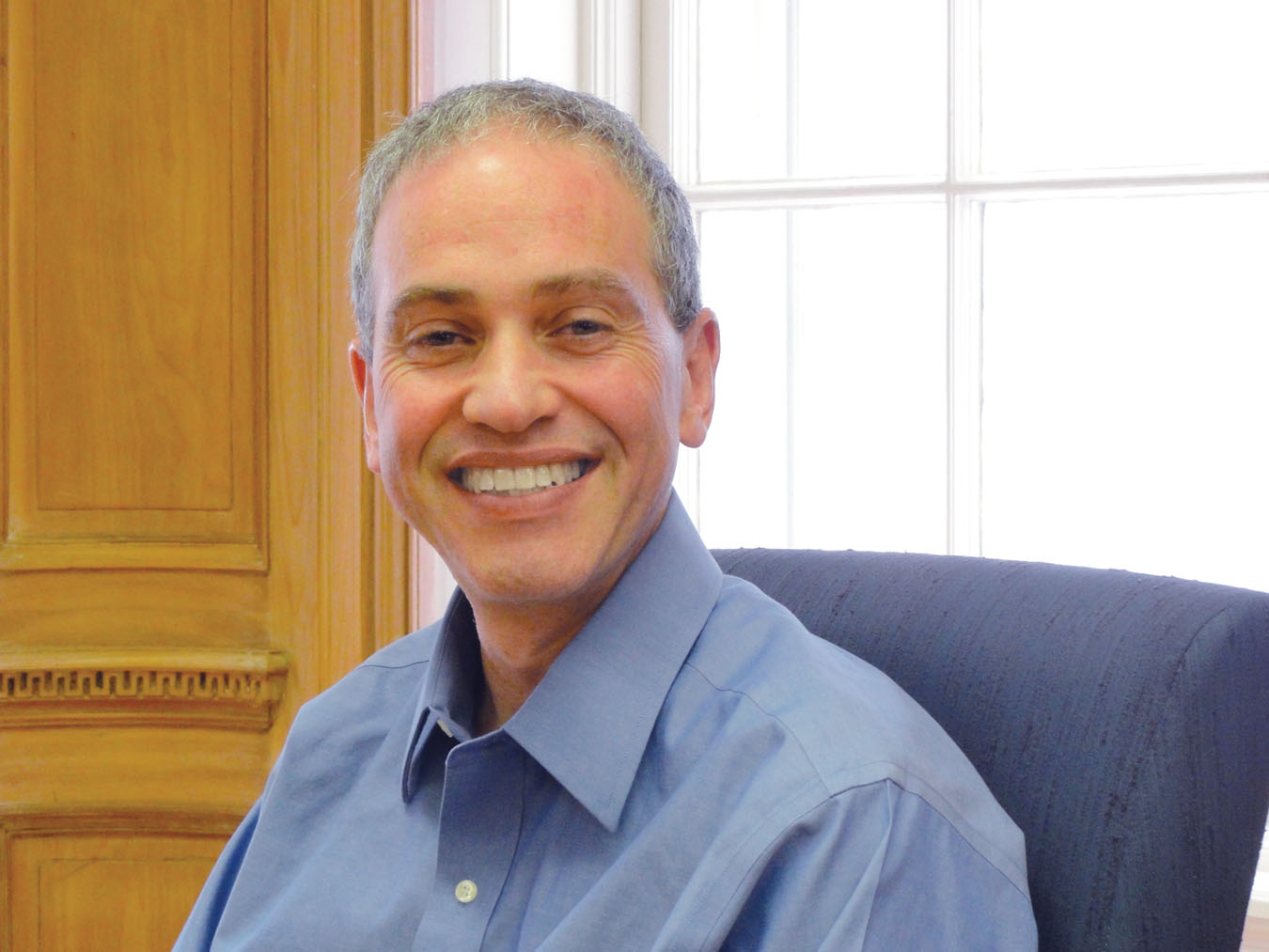
This is the first in a two-part feature on recent changes in the Reconstructionist movement. Stay tuned for part two, which will feature an interview with S. Tamar Kamionkowski, Ph.D., Vice President of Academic Affairs and Academic Dean at the Reconstructionist Rabbinical College, on the future of rabbinic studies.
While some have described it as the best-kept secret in the Jewish world, Reconstructionism has remained a relatively small part of a larger whole. Even so, it has been observed that Reconstructionist leaders are cropping up with greater frequency in public Jewish life. Despite being comprised of just above 100 congregations in the United States, Reconstructionist Judaism has made a significant impact, both intellectually and organizationally.
Rabbi Dan Ehrenkrantz, who has served the Reconstructionist Rabbinical College (or RRC for short) since 2002, is something of a force in contemporary rabbinics. His leadership has seen an impressive fundraising campaign — to the tune of nearly $50 million. As president he oversees one of the most diverse student bodies of any of the rabbinic colleges. In an era of stunning decline in public Jewish engagement, Ehrenkrantz straddles two worlds, the institutional and the independent, with ease and good humor. It is perhaps this comfort with both that has Ehrenkrantz and his partners in the Reconstructionist world taking new risks.
Until recently, the Reconstructionist movement looked much like the others, what Ehrenkrantz described in a recent interview with New Voices as a “basic tripartite organizational structure.” This includes a seminary or seminaries; a congregational branch which oversees individual member shuls; and a rabbinic association, made up of the ordained leaders of its movement. “What the Reconstructionist movement has done is to combine under one roof the rabbinical seminary and the congregational organization,” Ehrenkrantz explains. “What was previously two organizations is now one.”
All the staples of a multi-branched organization — more than one board, executive overseer, and mission statement — have been consolidated. The Jewish Reconstructionist Federation, henceforth the Jewish Reconstructionist Movement, operates from its new academic headquarters.
Ehrenkrantz cites advantages to the unification, particularly as it relates to the question, “What is the Reconstructionist movement trying to do?” Given the fading relevance of the major denominational players, a reevaluation of purpose may be just what the doctor ordered. But determining the usefulness of a religious movement is inherently problematic: No one wants their preferred expression of Judaism to fall into the sea.
Yet the current denominational system isn’t sustainable. Young Jews, within and without Orthodoxy, are increasingly seeking meaning in independent minyanim and other forms of spiritual expression. There’s hope in the onset of new converts, but religious bureaucracy and the politics of conversion threaten to stymie a source of lifeblood that might otherwise contribute to a filling of the gaps, at least in part.
Ehrenkrantz’ approach to these problems is multi-faceted, found in seeing Judaism as a civil undertaking as well as religious one. Judaism is language, art, cultural memories and food. To Ehrenkrantz, Reconstructionism’s task is not to come at potential members on an exclusively religious level, but rather in whichever way each Jew connects to their heritage.
“Congregational life tends to be built around religious celebrations, holidays, life cycles,” Ehrenkrantz says. “Therefore, in a way you lose a piece of what Reconstructionist Judaism is trying to do, and change the definition of what Judaism in fact is. That was a concern of [Mordecai Kaplan, founder of Reconstructionism]. I would say Kaplan’s concern has been borne out by our history.”
As many congregations falter, where does Judaism find its revival? Part of the answer is found by asking how each movement relates to its constituencies and other co-religionists. As that great green rebbe, Master Yoda, once said, “The dark side clouds everything. Impossible to see, the future is.” Nevertheless, Ehrenkrantz hopes to tap into that independent streak running through many young Jews using another one of the classic tenets of Reconstructionism: that Judaism is the product of the Jews, not of God.
“Once you say that Judaism is created by the Jewish people, you end up with a different set of conclusions and different starting points,” he says. “A different understanding of religious authority. The role of a rabbi. What it means to be an educated, or an active, Jew.” By allowing this democratic approach to religious life follow its natural conclusion, the objective becomes empowering Jews to find an expression that combines personal values with particular religious observance.
“One of the things that distinguishes the Reconstructionist movement is a sense of lay ownership,” Ehrenkrantz explains. “There is a real interplay, and sharing and mutual respect, of the important roles of rabbi and laypeople together as owners. They are true creators of Judaism in that time and place.”
Furthermore, Reconstructionism’s new structure will have a practical benefit for those interested in affiliation. Membership dues, often seen as a necessary evil in congregational life, are getting a major overhaul. In the past dues structure, based on a model which favors numbers of members or households, the primary source of income was based on a fixed due, given in exchange for membership.
“[This old structure] closes off membership to only those who have members, or count members,” Ehrenkrantz shares. “And if you aren’t an organization that counts members, then there’s no way in.” Now the Reconstructionist movement will accept dues as a percentage of an organization’s budget. “Any organization that has a budget,” Ehrenkrantz elaborates, “could be eligible to join.” This includes online religious groups, among others.
The dues will be paid on a sliding scale, with each tier providing benefits specific to that pay range. In this way, groups may affiliate as closely as they find comfortable. In exchange, these organizations will receive services from professionals within Reconstructionism to tackle the unique problems they may face, or find a level of expertise that might otherwise be unavailable to smaller groups.
Furthermore, by having affiliates in experimental or otherwise original Jewish orgs, the Reconstructionist movement hopes to gain new perspectives and glean new ideas about how to engage the Jewish community as a whole. What this means for the future of Reconstructionism, or even American Judaism, remains to be seen.
Predictions Kaplan made about the future of American Jewish life have often come true. Yet though Reconstructionism hasn’t undergone a drastic down-sizing, as other movements have, it hasn’t ballooned either. Where it goes from here, no one can say, but leadership like Ehrenkrantz will likely be the force that takes it there.
The author of this piece is a prospective student at the Reconstructionist Rabbinical College for the Fall 2013 semester.

